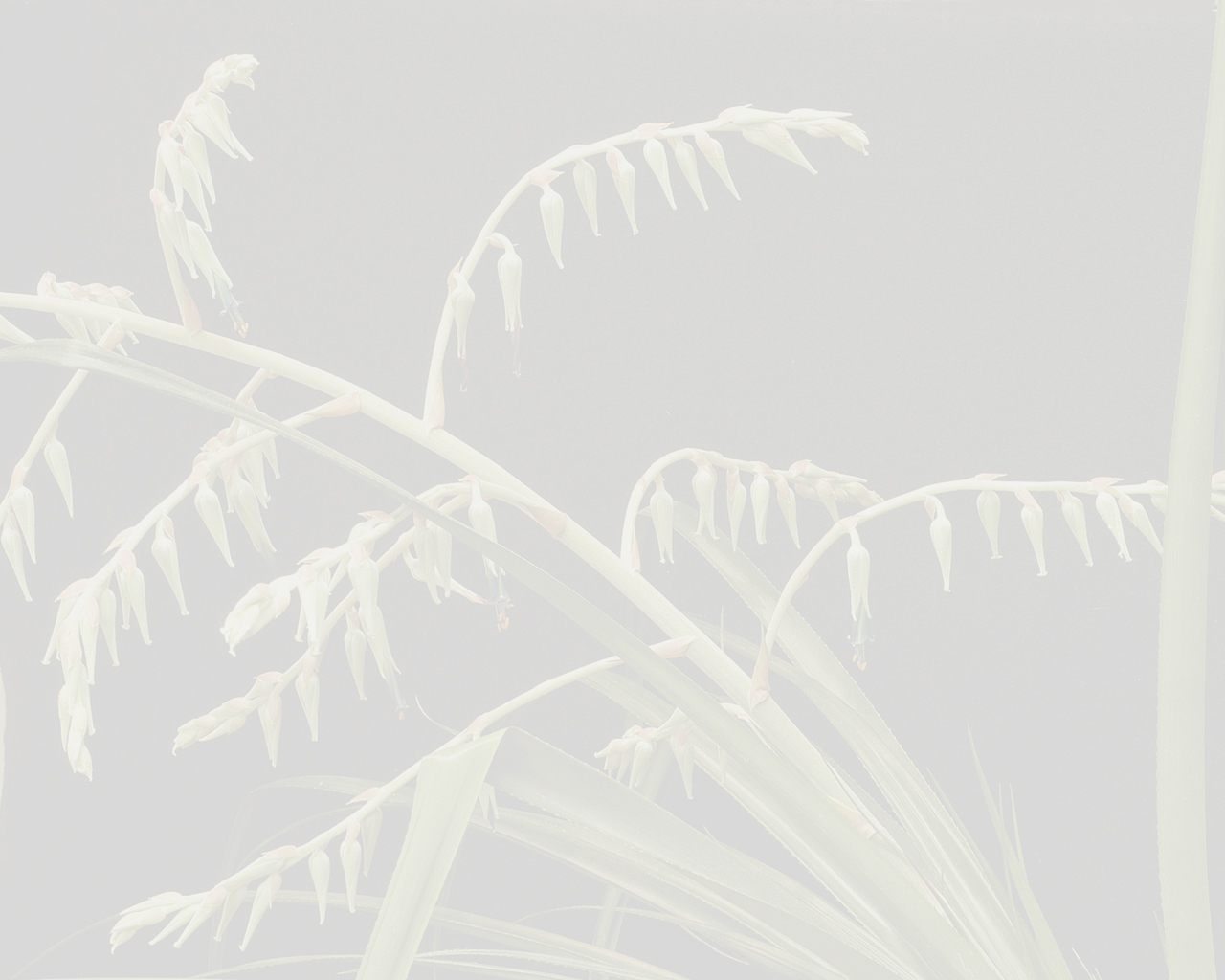Puya sehuencasensis R.Vasquez, Ibisch & R.Lara
Literature references:
Comments:
- Notes
In the early 1990s the upper valley of the Rio Ivirizu in the Carrasco National Park (Yungas rain forests of the Cochabamba department) was selected for a case study on the diversity of the Bolivian epiphytes (Ibisch 1996). The research for various reasons focused on the area around the locality called Sehuencas. It was especially apt thanks to the good acces¬sibility, the logistical facilities of this site in the at that time brand-new Carrasco National Park.
The extraordinary high plant diversity of the Sehuencas valley (Fig. 1-2), espe¬cially below 2 100 m, is related to the very high annual precipitation of probably more than 5000 mm and the perhumid climate (at 12-15°C mean annual temperature, frost-free; Ibisch 1996). The vegetation, especially at the bottom of the valley, has been disturbed to a varying extent. Some slopes have been subjected to logging (Podocarpus spp.). For centuries people will have descended from the high Andean settlements to this Yungas valley in order to import agricultural products from the warmer and humid areas (e.g., Coca leaves). This fact is stressed by a toponym: the low pass to Sehuencas starts at a set¬tlement called “Monte Puncu". “Puncu" is Quechua and means gate, and “Monte" is a Spanish word for forest or jungle. (Monte is derived from the latin word for “mount" or “mountain" (mons). Also in the Spanish, the more common meaning is ”mountain" or “hill". But monte is also used for “forest/jungle"; which is of special importance for Bolivia, where monte also occurs in the lowlands. This is in contrast e.g., to the European interpretation of the word and can easily be confusing, especially in the context of places' descriptions.) Thus, it is very fitting name for this comfortable gateway to the montane rain forests of the Carrasco National Park, about 120 km from Cochabamba. The name “Sehuencas" itself is Quechua and refers to the tall Cortaderia grass.
The Carrasco National Park belongs to the most plant species-rich regions of the world. This was detected by Michael Kessler and collaborators working on pteridophyte diver¬sity (Kessler et al. 1999). On a 0.08 ha large plot of montane rain forest at about 2100 m altitude almost 350 vascular plant species from 77 families were counted (Ibisch 1996). It is probable that in Sehuencas up to 1000 plant species coexist on one hectare. Cor¬responding diversity values probably can be observed only at a few sites in the world.
The valley has some scientific significance for being type locality of plant species such as Guzmania besseae Luther (Bromeliaceae) or Oliveriana simulans Dodson & Vasquez (Orchidaceae). Additionally, new animal species were discovered here as well. (e.g., Eleutherodactylus llojsintuta, Phyllonastes carrascoicola, Telmatobius yuracare; Kohler & Lotters 1999, De la Riva & Kohler 1998, De la Riva 1994).
The Sehuencas valley is also an Eldorado for bromeliad aficionados. Close to Monte Puncu, at about 3000 m, the former forest has been replaced by a high-Andean, puna-¬like tussock-grass savannah. Along the road a large population of Puya humilis with very dark, almost black flowers can be found (nei¬ther representing P. butcheriana nor P. tuna¬rensis; Vasquez & lbisch 2002). Single trees bear testimony to the former cloud forests that were in direct contact with drier forests of the higher valleys. At the highest altitudinal level the trees are covered by epiphytes such as Tillandsia rubella and T. sphaerocephala. Another Puya at the roadside is typical for the upper border of the cloud forest: the tall¬growing Puya atra with large white flowers.
In the lower, practically frost-free montane rain forests, at about 2200 m and below, abundance and diversity of epiphytic is impressing. Apart from the mentioned Guzmania besseae, Ibisch (1996) docu¬mented Guzmania kil¬lipiana, G. squarrosa, Racinaea flexuosa, R. schumanniana, R. seemannii as well as Tillandsia biflora, T. complanata, T. fendleri, T. longifolia,T. stenoura and T. violascens. Some non-fer¬tile Tillandsia-specimens could not be identi¬fied (e.g., Tillandsia cf. kuntzeana). During a recently realized trip, Roberto Vasquez and Raul Lara additionally sighted Guzmania glo¬riosa and Mezobromelia pleiosticha. In addi¬tion they found a Greigia in the understory of the forest. Otherwise, only Pitcairnia trianae had been recorded as understorey bromeliad. On the bank of the way following the valley a Puya is growing - and this species is the main topic of the present article.
The first author, while studying plants in the herbarium of La Paz for the planned revision of the genus Puya, discovered a specimen of a species which had been col¬lected about 14 years ago on a slope close to Sehuencas, and which was rapidly and roughly determined as Puya cf. pearcei (P. & C. Ibisch 93.0523, P. & C. Ibisch 93.1718). He immediately had doubts regarding this identification and decided to travel, together with another botanist, his friend Raul Lara, to the Sehuencas valley in order to study living plants of this species. The observation of the luckily recorded plant confirmed the suspi¬cion that it was new, for a long time neglected species. Now, this new species receives the name of its bromeliad-rich type locality Sehuencas in the Carrasco National Park. The research at this place provided important impulses to the epiphyte and biodiversity research in Bolivia. —See Die Bromelie

